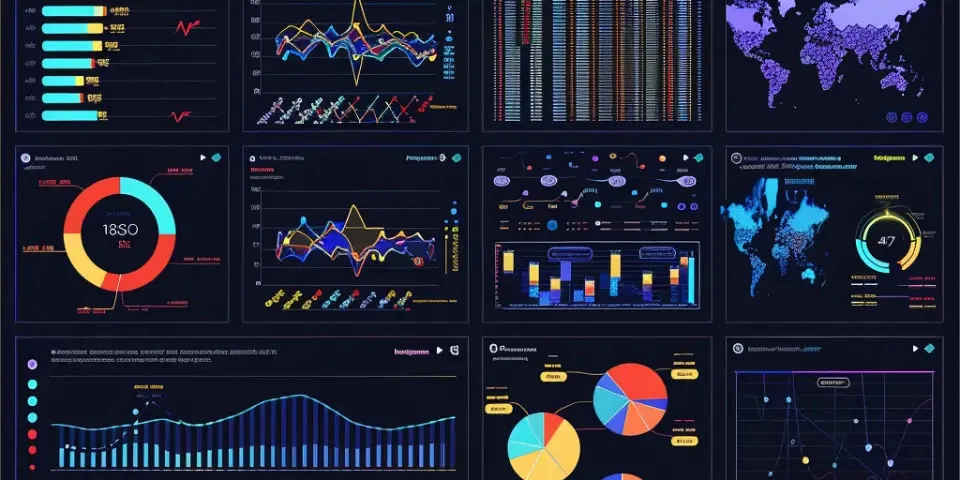Stand Out from the Crowd Generate Eye-catching Infographics with AI
Infographics have become increasingly popular in today's visually-oriented digital world. They offer a visually appealing and concise way to present complex information, making it easier for audiences to understand and engage with. While creating infographics can be a time-consuming task, the advancements in artificial intelligence (AI) have made it easier than ever before. In this article, we will explore how AI can help you generate eye-catching infographics and stand out from the crowd.
1. Automatic data visualization
With AI-powered tools, you can automatically transform raw data into visually appealing charts, graphs, and diagrams. These tools analyze the data and select the most suitable visual representation, saving you valuable time and effort. They also provide various customization options to ensure the infographic matches your branding and style.
Explore Spicy Chat in WeMate
2. Intelligent template suggestions
AI algorithms can analyze your content and suggest suitable infographic templates. By understanding the tone and purpose of your content, AI can recommend templates that align with your goals. This feature enables you to quickly find the right layout and design for your infographic, reducing the need for extensive manual searching and decision-making.
3. Seamless incorporation of images and icons
AI-powered tools offer vast libraries of images and icons, allowing you to effortlessly search and find relevant visual elements for your infographic. These tools often utilize machine learning algorithms to categorize and tag images, making it easier to find the perfect visuals to enhance your data. The ability to seamlessly incorporate these images and icons helps in creating visually appealing and engaging infographics.
4. Intelligent content alignment
AI algorithms have the capability to automatically align and position your content within the infographic. By analyzing the layout and structure of your content, these tools can determine the optimal placement for headings, subheadings, and body text. This feature ensures that your infographic is visually balanced and easy to read.
5. Real-time collaboration
AI-powered infographic tools often come with real-time collaboration features, allowing multiple team members to work on the same project simultaneously. These tools enable seamless collaboration, making it easier to brainstorm ideas, share feedback, and make edits in real-time. This feature greatly enhances workflow efficiency and promotes teamwork.
6. Mobile-friendly and responsive designs
In today's mobile-driven era, it is essential to ensure that your infographics are mobile-friendly and responsive. AI-powered tools can automatically adapt your infographics to different screen sizes and resolutions, ensuring that they look great on any device. This feature helps you reach a wider audience and ensures a consistent user experience across various platforms.
7. Analytics and performance tracking
AI-powered infographic tools often provide analytics and performance tracking features. These tools allow you to measure the success of your infographics by tracking metrics such as views, engagement, and social shares. The insights obtained can help you understand your audience better, optimize your infographics, and make data-driven decisions for future projects.
8. Maintaining brand consistency
AI-powered tools usually allow you to create and save customized templates with your brand elements and colors. This ability to maintain brand consistency across all your infographics is crucial for building brand recognition and trust. With AI, you can easily apply your brand guidelines and ensure that your infographics align with your overall brand identity.
9. Integration with other design tools
Many AI-powered infographic tools offer seamless integration with other design tools, such as graphic design software or presentation platforms. This integration allows you to enhance your infographics further, incorporating advanced design elements or transforming them into interactive presentations. By leveraging the capabilities of multiple tools, you can create truly unique and captivating infographics.
10. AI-powered versus traditional infographic creation
When comparing AI-powered infographic creation with traditional methods, there are several notable advantages. AI-powered tools significantly reduce the time and effort required to create high-quality infographics. They provide intelligent suggestions, advanced automation, and seamless collaboration features, giving you an edge in terms of efficiency and productivity.
11. FAQ:
Q: Are AI-powered infographic tools suitable for beginners?
A: Yes, most AI-powered infographic tools are designed with user-friendliness in mind. They offer intuitive interfaces and easy-to-use features, making them suitable for beginners without prior design experience.
Q: Can AI create infographics that are unique and original?
A: While AI can assist in generating layouts and design elements, the originality of the content and the creativity behind the infographic still depend on human input. AI serves as a powerful tool to enhance and streamline the creation process, but the uniqueness ultimately lies in the hands of the creator.
Q: What are some popular AI-powered infographic tools?
A: Some popular AI-powered infographic tools include Canva, Piktochart, Visme, and Infogram. These platforms offer a wide range of AI features, templates, and customization options to create eye-catching infographics.
12. References:
[1] Smith, J. (2020). The Power of Infographics: Using Pictures to Tell Your Story. Wiley.
[2] Pang, A. (2019). Infographics: The Power of Visual Storytelling. Rockridge Press.
[3] Crooks, M. (2017). Infographics: A Guide to Making Effective Business Communications. Kogan Page.
Explore your companion in WeMate